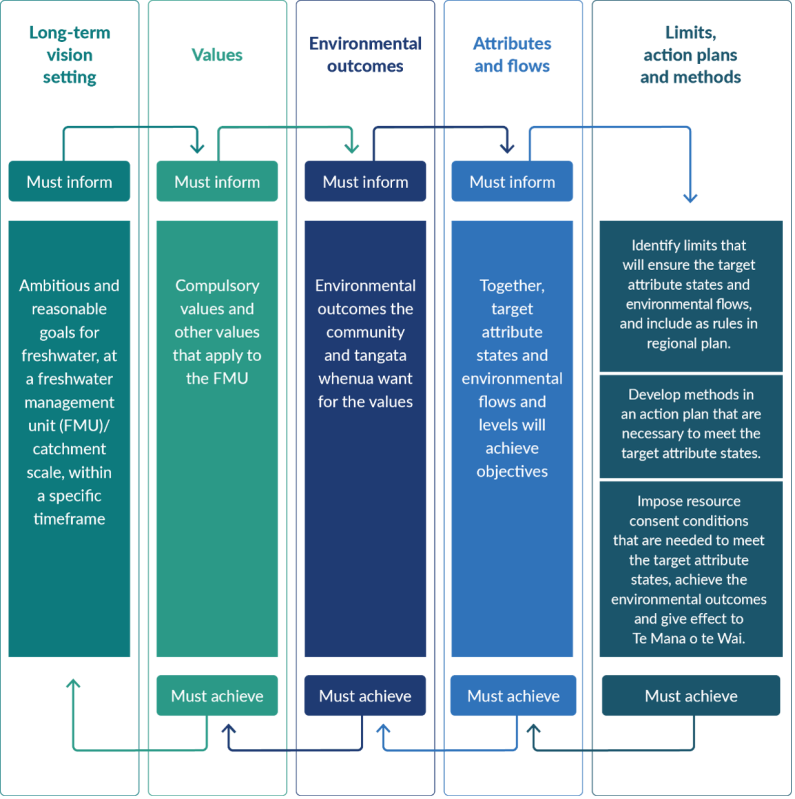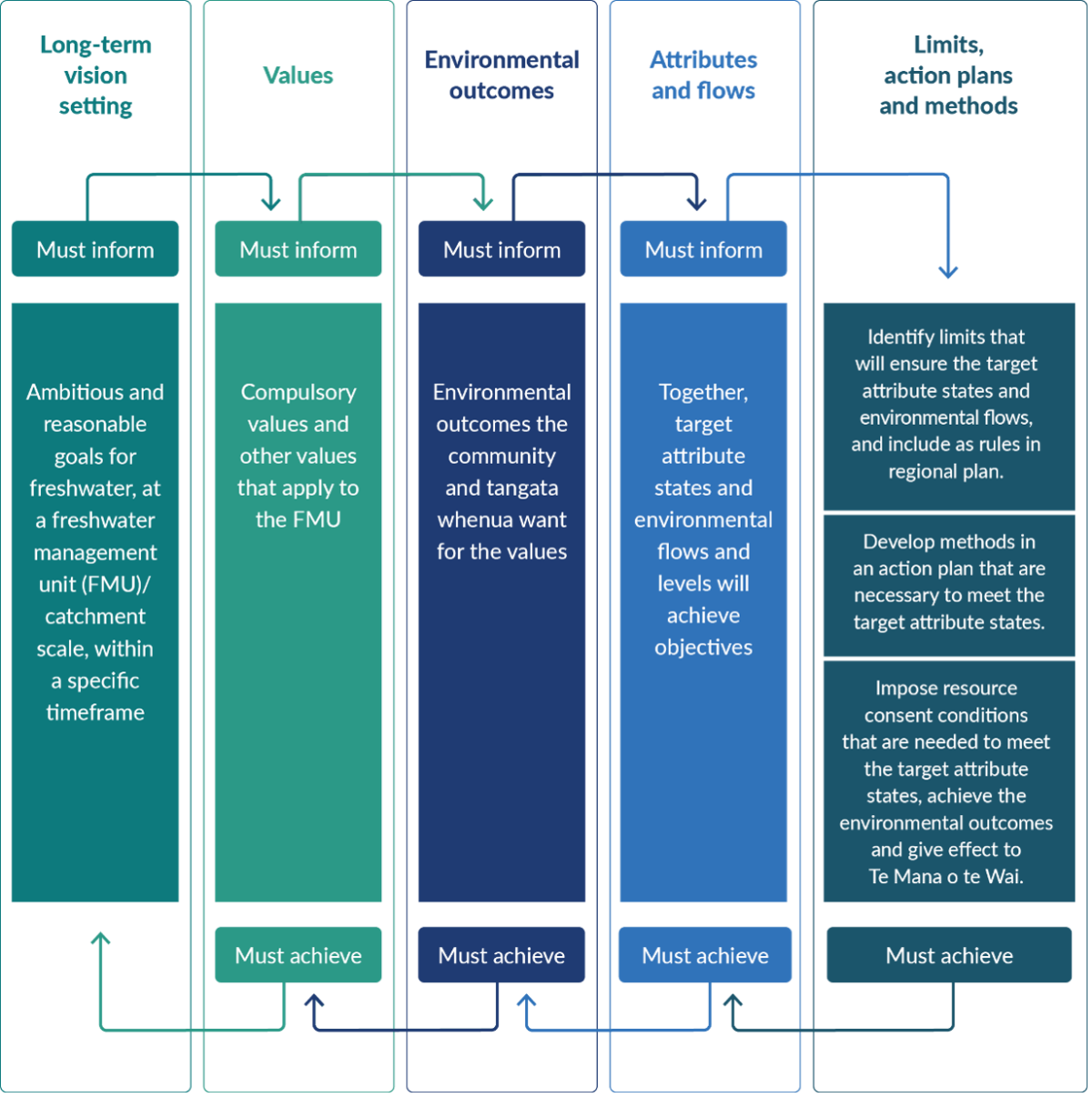Clause 3.7: NOF process

When implementing the NOF, councils and tangata whenua must apply the hierarchy of obligations in clause 1.3(5), as discussed in the section Clause 1.3: The fundamental concept of Te Mana o te Wai and its use in the NOF.
At each step in the process, the NPS-FM directs councils to:
Councils must also:
The NOF process outlines the steps to achieve the long-term visions for freshwater in a region. It instructs councils to set out a roadmap from the current state of its water bodies to the aspirational visions and transparent goals. This includes measurable interim steps of targets and timeframes, and a feedback loop to allow for adjustments if the process does not stay on track.
To meet the NOF requirements, councils must follow a series of steps. These lead to a suite of plan provisions, each giving effect to the one preceding it. This forms a cascade:
Long-term vision — values — environmental outcomes — flows/levels and TAS — limits and action plans (see figure 3).
Some steps are required to be recorded in the regional plan as specific plan elements (eg, environmental outcomes as objectives and limits, and environmental flows and levels as rules), or in the regional policy statement (long-term visions). The inclusion of action plans in the regional plan is optional (clause 3.15(4)).

Infographic on the NPS-FM framework showing the connections between vision setting, values, environmental outcomes, attributes and flows, and limits, action plans and methods. Each step must inform the following step, while also each step requires the step above it to be achieved before that step can be achieved.
Long-term vision setting
Ambitious and reasonable goals for freshwater, at a freshwater management unit (FMU)/catchment scale, within a specific timeframe.
Values
Compulsory values and other values that apply to the FMU.
Environmental outcomes
Environmental outcomes the community and tangata whenua want for the values.
Attributes and flows
Together, target attribute states and environmental flows and levels will achieve objectives.
Limits, action plans and methods

Infographic on the NPS-FM framework showing the connections between vision setting, values, environmental outcomes, attributes and flows, and limits, action plans and methods. Each step must inform the following step, while also each step requires the step above it to be achieved before that step can be achieved.
Long-term vision setting
Ambitious and reasonable goals for freshwater, at a freshwater management unit (FMU)/catchment scale, within a specific timeframe.
Values
Compulsory values and other values that apply to the FMU.
Environmental outcomes
Environmental outcomes the community and tangata whenua want for the values.
Attributes and flows
Together, target attribute states and environmental flows and levels will achieve objectives.
Limits, action plans and methods
To achieve TASs and environmental flows and levels, councils must:
8. Monitor and feedback loop. Councils will set up a monitoring programme (clause 3.18) that will measure environmental state of the water bodies and freshwater ecosystems by monitoring attributes to assess whether they are on track to reach the TASs. Councils will assess trends (clause 3.19) and adjust the limits, action plans and consent conditions where necessary (clause 3.20).
The feedback loop in step 7 is a repetitive cycle taken on a regular basis (eg, monthly monitoring and annual reporting on data) with assessments of whether attributes are tracking along their (interim) targets. Reviews are required at least every five years.
Councils must set goals in a transparent manner. The roadmap through interim TASs should show realistic, achievable steps over regular intervals, with an equitable distribution of the requirements for improvement.
Best practice is to frontload the burden of improvement and have regular and transparent communications with the public about how the region’s water bodies and ecosystems are tracking towards the TAS and environmental outcomes, and how these all reflect the long‑term vision.
The steps to the interim targets must be on a pathway to reach the long-term outcomes, taking into account:
Councils could include a lookup table in their regional plans that set out the long-term vision, environmental outcomes and TASs, broken down into interim targets for fixed periods.
In the lookup table, each TAS is anchored to its timeframes. When the monitoring outcomes are placed next to the lookup table, councils can show in a transparent way whether the state of the water bodies and ecosystems is on track. An example of a lookup table for the interim TAS for dissolved oxygen is discussed in table 1.
When limits are set, these can also be usefully included in lookup tables, clarifying the reductions in time and the long-term transition needed.

Clause 3.7: NOF process
July 2022
© Ministry for the Environment